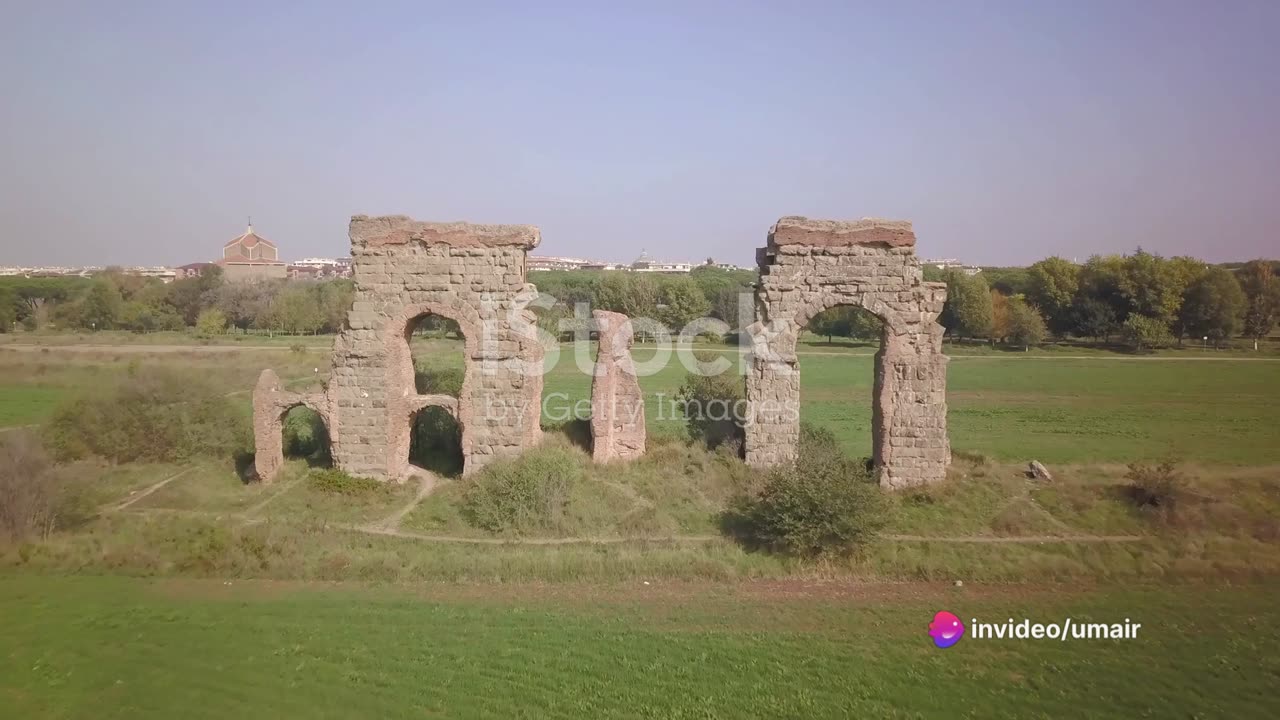Premium Only Content

Did You Know_ The Marvel of Roman Aqueducts
The marvel of Roman aqueducts stands as a testament to the ingenuity and engineering prowess of ancient Rome. These monumental structures were essential in supplying water to cities, towns, and even remote settlements throughout the vast Roman Empire.
Roman aqueducts were meticulously designed and constructed, utilizing advanced techniques for their time. They were built with a combination of underground channels, elevated bridges, and arched structures, all engineered to transport water from distant sources to urban centers. The aqueducts typically started at natural springs or rivers located at higher elevations, allowing gravity to aid in the flow of water over long distances.
One of the most famous examples of Roman aqueduct engineering is the Pont du Gard in modern-day France. This colossal structure spans over 50 kilometers and stands as a towering testament to Roman engineering prowess, with three tiers of arches reaching heights of up to 50 meters.
The engineering feats achieved by the Romans in constructing aqueducts were not merely practical but also aesthetic. Many aqueducts were adorned with intricate carvings, demonstrating the Romans' appreciation for both functionality and beauty in their architecture.
The impact of Roman aqueducts on society cannot be overstated. They facilitated urban growth, improved public health by providing a reliable source of clean water, and supported various industries such as agriculture, manufacturing, and public baths.
Despite the passage of centuries, many remnants of Roman aqueducts still stand today, serving as enduring symbols of ancient innovation and reminding us of the remarkable achievements of one of the greatest civilizations in history.
-
 1:21:23
1:21:23
T-SPLY
4 hours agoDemocrat Mayor Of Nashville Caught Doxing Ice Agents!
29.2K10 -
 3:16:25
3:16:25
Barry Cunningham
7 hours agoPRESIDENT TRUMP: NOTHING CAN STOP WHAT IS COMING! ARE YOU READY?
70.7K42 -
 13:06
13:06
Colion Noir
7 hours agoOpen Carrier Killed With His Own Gun At Autozone | Open Carry Gone Wrong
54.3K36 -
 57:09
57:09
Kitco NEWS
11 hours agoFiat Collapse Ahead Gold to $8,900 in Global Monetary Shift
16.5K4 -
 16:46
16:46
Nick Shirley
13 hours ago $1.82 earnedAsking Democrats About the Joe Biden Cover Up Scam
22.4K12 -
 2:24:06
2:24:06
I_Came_With_Fire_Podcast
4 hours agoThe 2017 Las Vegas Shooting: Conspiracy, Critical Thinking, and Narratives
18.2K3 -
 9:44
9:44
Melonie Mac
11 hours agoTwitch is Cooked
20.1K15 -
 1:10:41
1:10:41
Glenn Greenwald
11 hours agoSYSTEM UPDATE REVISITED: Prof. John Mearsheimer on Ukraine; Plus: Fallout from a Changing Syria
125K25 -
 1:30:20
1:30:20
Precision Rifle Network
1 day agoS4E17 Guns & Grub - Industry News, 2A, More Training Tips
16.3K3 -
 2:06:13
2:06:13
megimu32
5 hours agoON THE SUBJECT: Icons, Chaos & First-Play Flashbacks - Music Video Nostalgia & Wild Headlines
18.1K8